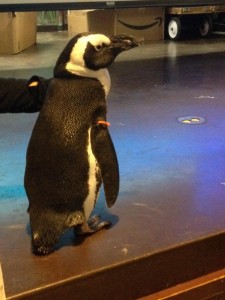I successfully completed all the requirements for my Master’s degree in Fisheries and Wildlife Sciences! I’ve begun applying for jobs and having been spending time this winter networking with environmental companies. Most of the positions I’ve been pursuing are focused on monitoring biota and aquatic habitats for conservation and research goals. I’m hopeful that I’ll find the right next position for me soon!
Posts
Defense Date Set!
We’ve set my defense date for December 12th. I’m looking forward to presenting and discussing some of the interesting results from my fish and invertebrate data related to how taxonomic and functional richness and diversity of the native assemblage are associated with non-natives!
Invertebrate samples complete!
I just finished processing and identifying the 494th invertebrate sample from Lake Erie wetlands, which means that the lab work for my masters project is finally complete!! What a great accomplishment on the 2 year anniversary of moving to Columbus and starting grad school at the Ohio State University! Now for analyzing 6,299 rows of data and 69,582 organisms…
IAGLR Conference 2016
I’m excited to be presenting my research findings at the IAGLR conference this week at the University of Guelph in Ontario, Canada. It’s beautiful here, and it’s been a pleasure to meet and discuss findings with many other student and professional researchers who are studying issues in the Great Lakes!
Water across the world- outreach project
Ohio waters (Ottawa National Wildlife Refuge wetland) and Ugandan Waters (Lwamunda swamp)
Our lab at OSU within School of Environment and Natural Resources has created an outreach project in hopes of providing water quality education to school-age children in Ohio and Uganda. Our goal is to promote global awareness of water issues by linking the students we work with in both countries. Please click the link https://buckeyefunder.osu.edu/project/2149to find out more and consider supporting our SENR outreach project, WATER ACROSS THE WORLD!
Volunteering at the Museum of Biological Diversity
We had a great time volunteering to help with the Museum of Biodiversity’s annual open house in Columbus! The adults and children who came were so excited to see the live arthropods we had from other parts of the world, including the Australian leaf insect, giant drummer cockroach, tailless whip scorpion, and Arizona blonde tarantula. We enjoyed teaching visitors fascinating facts about these unique critters, especially the Chilean rose tarantula and halloween moon crab (displayed below).
Aquatic Invasive Invertebrate Management Chili
We had a chili cook-off this weekend. Different labs in our School of Environment and Natural Resources created many unique varieties such as sweet potato bison and peanut butter chili! Our lab concocted an Aquatic Invertebrate chili in honor of the Invasive invertebrates we are studying, including White Perch, Green Porcelain Crab, Rusty Crayfish. We marketed this as an effective management plan for controlling and reducing abundance of invasives… Just eat them! It was tasty and we were awarded third place in the competition!
Crazy busy
Five weeks in, and the semester is officially crazy busy! My mind is occupied, attempting to balance many tasks including two statistics courses, processing and identifying invertebrate samples, sending final reports from last year to the Nature Conservancy, giving lectures and grading assignments as a TA for Fisheries Ecology, managing 10 undergraduates in the lab weekly, and being a part of two graduate committees for the School of Environment and Natural Resources.
After laughing at a few of the comics and gaining insight from advice pieces about the grad school life, my perspective fortunately seems a bit lighter for the night. Hope you find the same response from these links below.
http://www.phdcomics.com/comics/archive.php?comicid=1856
Dealing With PhD Stress The Right Way: Advice From 3 PhD Graduates
The Top 10 Most Memorable Lessons And Things I Learned In Grad School
Beginning data analysis
The spring semester is finally underway, which, for me, includes taking two statistics courses. I am excited to implement some of the tests we’ve been learning about in class, especially those associated with my primary question: How are taxonomic and functional diversity of natives and exotics associated? But, before that, I’ll explore the fish and invertebrate data we’ve collected. For example, below is a histogram representing the taxonomic fish richness of the 14 sites that we sampled during 2013-2015. The data are split up by sampling technique so we can quantify which gear successfully caught the greatest number of fishes!
Does the presence of a live animal increase knowledge gain?
I and Kaitlin, another aquatic ecology graduate student, had a great night at the Columbus Zoo helping with a research study. It was focused on investigating the effects of live species on knowledge gain of animal facts! We were only 4 feet away from a live jaguar and got to pet a soft African penguin! This is Trout, who had recently molted and I was surprised how soft and fluffy he was!

We are hypothesizing that live animals will help listeners connect more with the information being presented, and that they will learn more than listeners who do not have a live animal present. I’m excited to find out the results!






